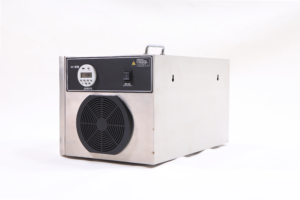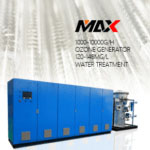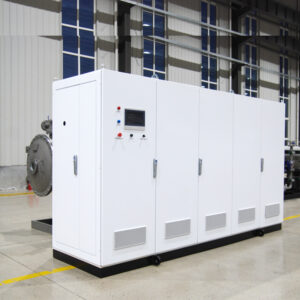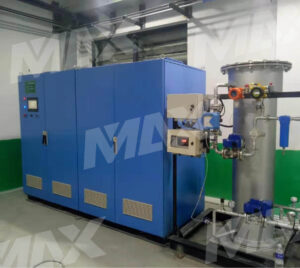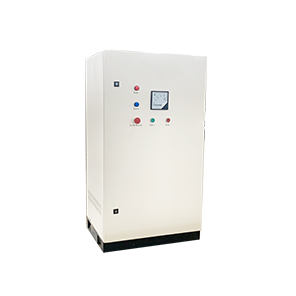The MAX ozone micro-nano bubble device uses ozone and water as raw materials to instantly produce high-concentration ozone water. The equipment has built-in ozone mixer, automatic exhaust valve, water pump and supporting valve instruments, إلخ. PLC fully automatic control, automatic operation. Connect to the tap or water tank to output high-concentration ozone disinfection water. The high-speed rotating pump impeller of the equipment mixes the liquid with the ozone gas that will not react with the sewage in the dissolved gas tank. Due to the pressurized mixing in the dissolved gas tank, the gas and liquid are fully dissolved and the dissolution efficiency is high. This process performs gas-liquid Attract, mix, dissolve and deliver highly soluble liquids directly to the point of use.
The turbine nanometer high-efficiency mixing device is a special gas-dissolving device that can efficiently dissolve ozone. By changing the microscopic material form of sewage molecules and the surface tension of water, it changes the cluster structure of organic pollutant molecules and enhances the solubility of O3 in water to achieve improvement. The purpose of ozone gas mass transfer efficiency is to improve the dissolution efficiency of ozone gas and effectively reduce the ozone dosage.
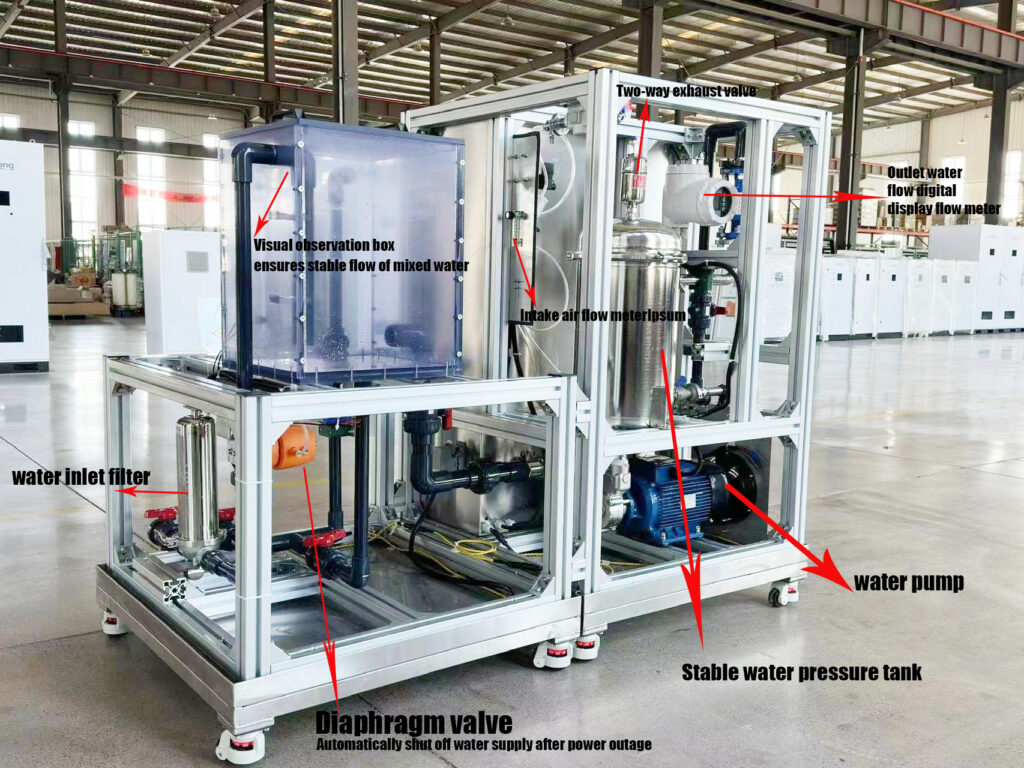
Bubbles with a diameter of 1 μm are subject to pressures up to 3 atmospheres. The dissolution of micro-nano bubbles in water is a process in which the bubbles gradually shrink. The increase in pressure will increase the dissolution rate of the gas. As the specific surface area increases, the bubbles shrink faster and faster, and finally dissolve into the water. A bubble with a diameter of 1 mm rises in water at a speed of 6 m/min, while a bubble with a diameter of 10 μm rises at a speed of 3 mm/min. The latter is 1/2000 of the former. If the increase in specific surface area is taken into account, the dissolving capacity of micro-nano bubbles is 100,000 times higher than that of ordinary air.
Process characteristics
(1) High gas mixing efficiency and fast reaction rate (2) Low ozone dosage, efficient mixing, high utilization rate, and low operating cost; (3) Integrated equipment and processes, small footprint and low investment cost; (4) The equipment has a long service life and a complete range of models suitable for various complex sewage; (5) There are few restrictive conditions, almost no selectivity in the degradation of organic pollutants, and the operation is stable and reliable;
 ماكس مولد الأوزون
ماكس مولد الأوزون

